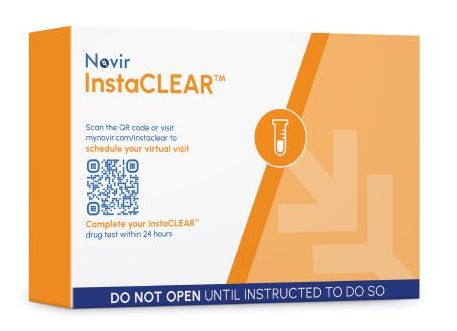We get this question a lot. Parents, donors, employers, and even panicked potential employees call our after-hours line to ask about drug test detection and how far back a test can detect drugs.
The answer? “It depends.”
The drug, test method, user’s body, and frequency of use determine the detection window. It also depends on something called a “cut-off level.”
The urine drug test is the “gold standard” for drug testing. But hair and oral fluid testing are becoming more and more common, and each has its strengths as well as limitations, and each has a different detection window.
Urine
Since the Federal Drug-free Workplace Act launched drug testing as an industry in 1988, urine has been the standard. It is an inexpensive, easy-to-perform drug test and is non-invasive. It is also currently the only method permitted for federally mandated testing.
Most drugs will test positive in urine for 2 to 4 days after use. Marijuana is the exception and can be detected for 30 days or more in a heavy user.
One of urine drug testing’s drawbacks is that it’s possible for a donor to cheat the drug test. Type “How to cheat a drug test” into your favorite search engine and you will find all kinds of products, kits and techniques that may or may not work.
Many users will abstain long enough to pass a pre-employment drug test, but go back to using later.
We know. They come to us to make sure they test clean.
Experienced drug test collectors are trained to reduce the likelihood that a cheater might get through. Short of going into the bathroom with them, all reasonable precautions are built into the process. But some will inevitably succeed.
Hair
Hair testing continues to gain popularity. It provides a 90-day history for most specimens, which explains the higher (9.6%) positive rate. Because cheating is nearly impossible, hair testing effectively detects habitual use but may not identify a one-time occurrence.
However, not everyone has enough head hair, so collectors use body hair instead. Since the drug test detection process requires cutting hair close to the skin, it does not identify drug use from the most recent five days. To maximize detection, some companies combine hair testing with urine or oral fluid testing.
At InOut Labs, we conduct numerous hair tests, and in most cases, we successfully collect enough hair from the donor to ensure accurate drug test detection.
Oral Fluid
Oral fluid testing is growing in popularity because it is easy to administer and very difficult to cheat.
Its shorter window of detection (especially for marijuana) makes oral fluid testing a really good choice for suspicion or post accident testing. Despite the shorter detection window, the positive rates are higher than urine tests (7.7% vs. 4.7% for urine).
Drawbacks are that there is a cost for the testing device, and there is no generally available way to collect a split specimen. Lab fees are higher too. As those costs come down, expect to see more oral fluid testing.
What about blood?
Blood is not used for employee drug testing for several reasons. It’s expensive and invasive, and, counter-intuitively, it’s not very useful. Drug metabolites leave the blood in a matter of hours. In fact, a person may still be feeling the effects of the drugs and have a negative blood test.
For more information on drug testing for your company, contact InOut Labs.


